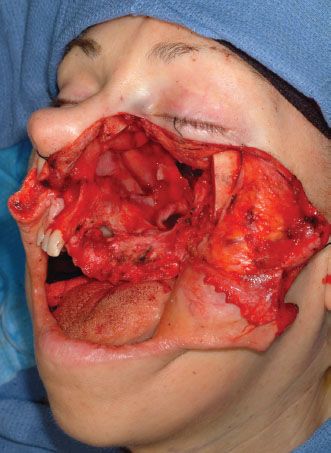FIGURE 25.1 Brown’s classification of maxillectomy defects, including vertical and horizontal components. This classification system provides a reconstructive algorithm to guide the reconstructive surgeon, which is useful in the decision-making process. (Redrawn from Brown JS, Shaw RJ. Reconstruction of the maxilla and midface: introducing a new classification. Lancet Oncol 2010;11(10):1001–1008. doi: 10.1016/S1470-2045(10)70113-3.)
It is also important to assess the suitability of various free flap donor sites. Specifically for the fibula free flap, the legs should be examined for any evidence of arterial insufficiency, venous stasis, or previous scars from trauma or surgery. The AAI (ankle–arm index) can be used as a rough screen of lower extremity vascular perfusion, with an AAI of less than 1.0 being an indication of likely peripheral vascular occlusion.
INDICATIONS
The indications for fibular free flap reconstruction includes defects in the infrastructure or alveolus of the maxilla. The nature of the bone graft is such that it cannot be used to address vertical defect involving the orbital rim and/or lateral aspect of the zygoma. Vertical defects are best managed with a scapular or iliac graft. In contrast, the fibula free flap is ideally suited for the reconstruction of infrastructure defects. The bone stock is hearty and will accommodate osseointegrated implants.
CONTRAINDICATIONS
The most obvious and important contraindication to the use of the fibula free flap is vascular insufficiency, either to the flap (peroneal artery) or to the distal leg and foot after flap harvest (anterior and posterior tibial arteries). Rarely, the fibula bone may be absent or severely diminished in size, or even replaced by a fibrous band.
Relative contraindications include severe edema or venous stasis, as well as bulky overlying soft tissue in the lateral lower leg. Finally, though the fibula is a non–weight-bearing bone, careful consideration must be given to harvesting from a patient’s only remaining leg or only remaining weight-bearing leg.
The fibula flap has limitations in terms of the arc of soft tissue rotation, as well as lack of bulk of soft tissue. Thus, when a large volume soft tissue defect exists, an alternative reconstructive method should be considered. In particular, defects that involve the orbital rim and/or lateral aspect of the zygoma require the vertical bone height that can only be achieved with an iliac or vertically oriented scapular bone flap (Fig. 25.2).

FIGURE 25.2 A maxillary defect with a vertical component that involves the orbital rim is difficult to manage with a fibular graft because there is no support for the orbital rim.
PREOPERATIVE PLANNING
As mentioned above, it is essential to plan out the structure and layout of the flap reconstruction based on the anticipated surgical defect. The fibula free flap contains ample length but limited caliber of bone; furthermore, the skin paddle is typically well vascularized but with limitations in terms of amount and arc of rotation. These characteristics make the fibula flap ideal for defects in the inferior maxilla, those which do not require extensive bone stock for reconstruction of the orbital floor or soft tissue (e.g., orbital exenteration) reconstruction.
Imaging Studies
Imaging studies of the head and neck must be obtained and are critical in planning ablative surgery. In addition, some form of imaging is imperative to evaluate the blood flow in the lower extremity and determine the suitability of fibula free flap harvest. It is imperative to confirm that the tibioperoneal trunk gives adequate runoff to the foot via the anterior and posterior tibial arteries and the peroneal artery. Patency of the peroneal artery is also critical to the viability of the free flap. If three-vessel runoff is identified, fibula harvest can easily be performed with no risk to the vascularity of the foot. If only two-vessel runoff is identified, then harvest of the peroneal artery will leave only one artery to supply the foot, which is very tenuous, and use of the fibula flap should be carefully reconsidered.
Many surgeons advocate the use of magnetic resonance angiography to obtain detailed anatomic information about the tibioperoneal anatomy, as well as to possibly localize perforator vessels on the peroneal artery and their course in the posterolateral intermuscular septum. Others have traditionally advocated color flow Doppler as a less costly and invasive method of imaging the lower extremity. In an experienced ultrasonographer’s hands, this technique can also identify septocutaneous perforators from the peroneal artery, thus aiding in the design of the skin paddle.
SURGICAL TECHNIQUE
Stay updated, free articles. Join our Telegram channel

Full access? Get Clinical Tree


